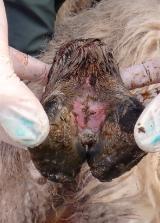It is not unusual to confuse the different foot diseases found in sheep, in particular CODD, footrot and scald. CODD is often recognised by farmers as the disease that causes the hoof capsule of the foot to fall off.
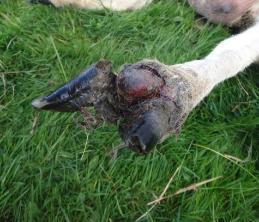
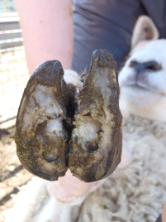
Images: CODD with hoof capsule coming away, SCALD showing red and inflamed inter-digital skin, FOOTROT showing damage to horn tissue of sole on both digits
Stages of CODD
Our studies of sheep affected by CODD on farms have shown a distinct pattern of disease, which we have divided into 5 grades.
Grade 1 CODD
Is the earliest stage of lesion whereby we observe erosion/ulceration with or without hair loss specifically at the level of the dorsal coronary band.
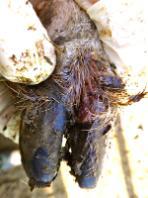
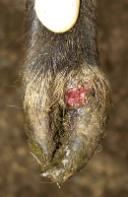
Grade 2 CODD
Erosion/ulceration of the skin at the coronary band with partial (<50%) under-running of the hoof horn dorsally, abaxially and tending towards circumferential under-running.
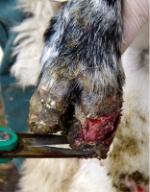
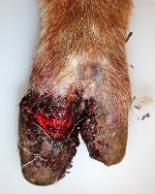
Grade 3 CODD
Erosion/ulceration of the skin at the coronary band with 50% -100% under-running of the hoof horn with possible hoof horn avulsion.
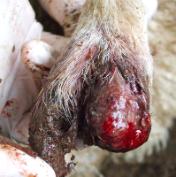
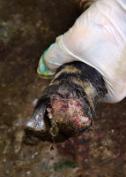
Grade 4 CODD
Healing foot with the horn beginning to regrow but an active lesion still present.

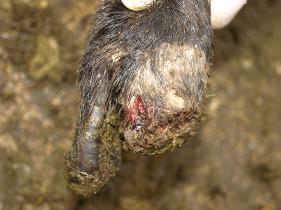
Grade 5 CODD
Healed foot, often with deformation of the regrown horn.
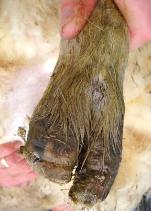
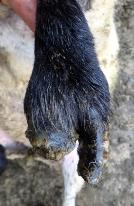
A published paper describing this clinical picture and lesion grading system in more detail can be found at:
Back to: Institute of Infection, Veterinary and Ecological Sciences
